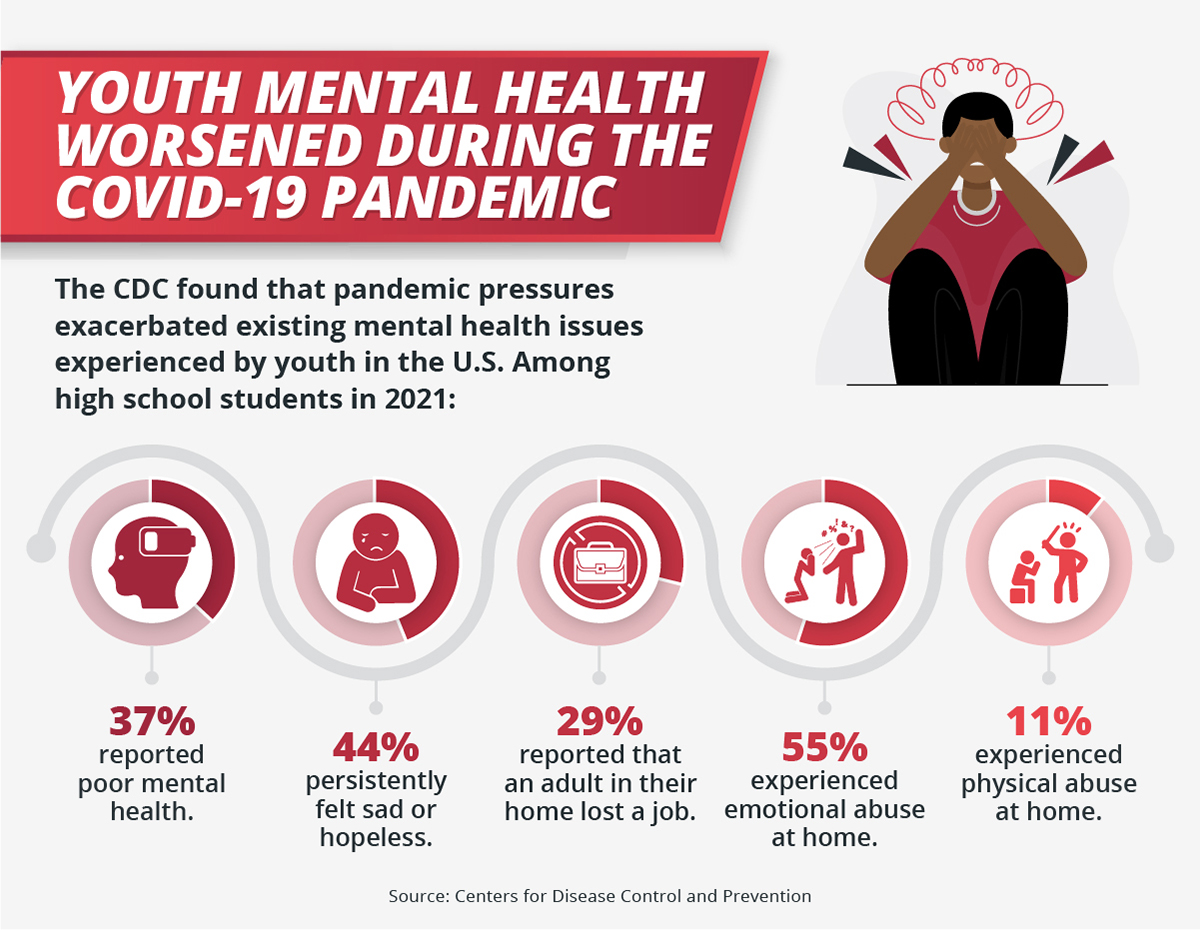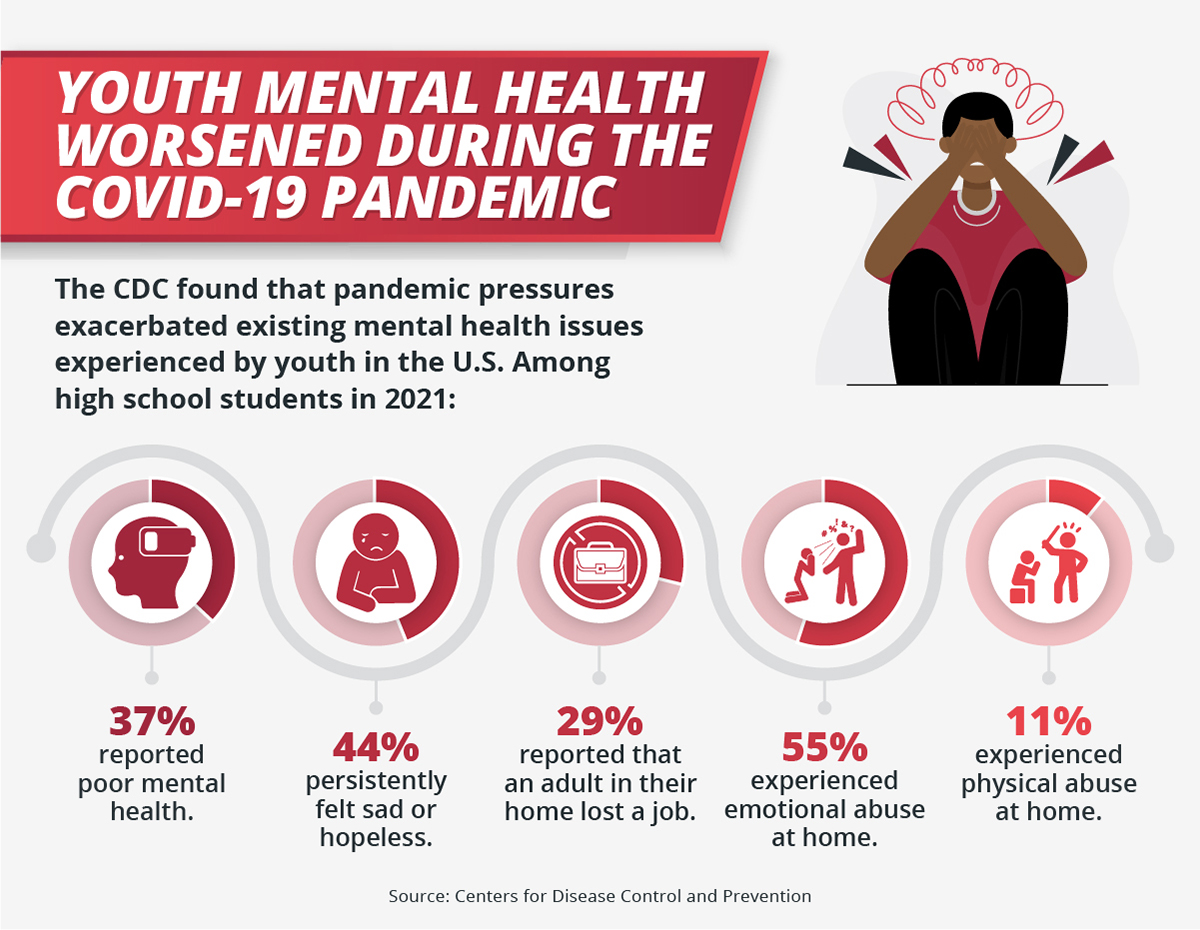Youth Mental Health: Challenges And Solutions
Young people today encounter unprecedented mental health challenges. The rise in digital connectivity has paradoxically increased feelings of isolation among youth. Moreover, anxiety and depression rates are climbing, signaling an urgent need for intervention.
Historically, mental health issues in youth have often been overlooked. Yet, recent studies highlight that one in five adolescents experience a mental health condition, requiring immediate attention. Implementing school-based mental health programs has shown significant promise in addressing these concerns effectively.

Mental Health in Today's Youth: An Overview
The mental health of today's youth is a critical issue. With the advent of social media, young people face unique pressures. These pressures significantly impact their mental well-being.
Mental health refers to our emotional, psychological, and social well-being. It's crucial for handling stress, making decisions, and building relationships. For youth, maintaining good mental health is especially important as they navigate school and social life.
However, numerous factors can negatively influence youth mental health. These include academic pressures, family issues, and peer relationships. Digital connectivity often exacerbates these challenges, leading to isolation and anxiety.
Recognizing these challenges is the first step in addressing them. Implementing mental health programs in schools can be a game-changer. By providing education and support, we can create a healthier environment for our youth.
Challenges Faced by Youth in Mental Health
Youth today face numerous mental health challenges. These issues stem from a variety of sources. Understanding these challenges is crucial for developing effective solutions.
Societal and Environmental Factors
Societal factors play a significant role in affecting youth mental health. The pressure to fit in can be overwhelming for many young people. Additionally, environmental factors like poverty and unsafe living conditions add layers of stress.
Discrimination and social inequality further complicate the situation. Young people who experience these issues often feel isolated. Such feelings can worsen mental health problems like depression and anxiety.
Community support can be a powerful tool. Initiatives aimed at promoting social inclusion are vital. These programs can help reduce the stigma around mental health issues.
The Role of Digital Technology and Social Media
Digital technology and social media have a complex impact on mental health. While they offer connection, they can also isolate. Constant exposure to idealized images can harm self-esteem.
Online bullying is another serious issue. Negative comments and cyberbullying contribute to stress. This can lead to more severe issues like anxiety and depression.
Encouraging healthier online habits is essential. Teaching youth how to balance screen time with real-life interactions can help. Parents and educators play a key role in this guidance.
Family and Academic Pressures
Family dynamics are pivotal in shaping mental health. Supportive families provide emotional stability. Conversely, unstable family environments can disrupt mental well-being.
Academic pressures add another layer of stress. The pursuit of high grades and college admissions is stressful for many students. Often, this constant stress can lead to burnout.
Schools can implement mental health resources to help. Workshops on stress management can be very beneficial. Creating a supportive academic environment is crucial for mental health.
The Prevalence of Anxiety and Depression Among Youth
Anxiety and depression are increasingly common among today's youth. Studies show that one in five adolescents experience a mental health disorder. This alarming rate highlights the urgency of addressing these issues.
Youth face multiple stressors that contribute to anxiety and depression. Academic pressure is a significant factor. Social expectations and family issues also add to the burden.
Social media plays a complicated role. While it offers community, it also contributes to feelings of inadequacy. The constant comparison to peers can lead to low self-esteem and anxiety.
Efforts to improve mental health resources are crucial. Schools and communities must work together to provide support. Access to counseling and mental health programs can make a significant difference.
The Impact of Mental Health Issues on Youth's Lives
Mental health issues profoundly affect young people's lives. These impacts touch every aspect, from school to social relationships. Addressing these issues is essential for their overall development.
Academic performance often suffers due to mental health struggles. Anxiety and depression can make it hard to concentrate. This leads to falling grades and a lack of motivation.
Relationships with peers also take a hit. Mental health problems might lead to withdrawal from social interactions. Friends may find it challenging to offer support.
Family dynamics can become strained. Youth dealing with mental health issues may act out or become distant. This can create a cycle of misunderstanding and stress within the home.
The long-term effects can be devastating. Left untreated, mental health problems can affect future job prospects. They may also contribute to substance abuse and other risky behaviors.
Improving mental health resources can change these outcomes. Schools and communities offering timely support can make a big difference. Early intervention is key to helping youth lead healthier, happier lives.
How Stigma Affects Mental Health in Youth
The stigma surrounding mental health can be damaging for young people. They may fear being judged or misunderstood. This often stops them from seeking help.
Stigma can lead to secrecy and shame. Young people might hide their struggles from family and friends. This lack of support can worsen their condition.
Peer judgment plays a significant role. Youth often worry about how their friends will react. Negative comments or gossip can make them feel isolated.
Educational institutions also contribute to the stigma. Schools sometimes lack resources or awareness of mental health. This creates an environment where mental health issues are not openly discussed.
Social stigma extends to the community as well. Society tends to label those with mental health issues unfairly. These labels can have long-lasting effects on self-esteem and confidence.
Efforts to reduce stigma are essential. Open conversations about mental health can make a difference. Schools, families, and communities must work together to foster understanding and empathy.
Successful Cases and Strategies in Addressing Mental Health in Youth
Several successful strategies have been implemented to address youth mental health. Schools that introduce mental health programs see positive results. These programs help students understand and manage their emotions.
Community centers also play a critical role. Centers offering counseling and activities provide a supportive environment. Such spaces encourage youth to open up about their struggles.
Peer support groups are another effective strategy. These groups allow young people to share their experiences with others who understand. Knowing they are not alone can be incredibly comforting.
Technology can also aid in mental health initiatives. Apps designed for mental health support are becoming more popular. These tools can offer valuable resources at the touch of a button.
Collaborations between schools, community centers, and healthcare providers have shown great promise. By working together, they can offer comprehensive support. This multi-faceted approach ensures that youth receive the help they need.
Implementing these strategies more widely can make a significant difference. It's crucial to continue exploring and refining these methods. Together, we can create a brighter future for our youth.
Mental Health Education and Its Role in Schools
Mental health education in schools is crucial. It helps students understand their emotions better. This understanding leads to healthier coping mechanisms.
Schools that incorporate mental health programs see significant benefits. Students become more aware of how to manage stress and anxiety. These skills are essential for both academic success and personal well-being.
- Reduces stigma around mental health issues
- Encourages open discussions
- Provides early intervention opportunities
Mental health education also equips teachers with the tools they need. Teachers can identify signs of mental distress early on. Early identification can lead to timely support and intervention.
Several schools have adopted mindfulness practices as part of their curriculum. Mindfulness helps students stay present and reduce stress. Research shows it can improve focus and emotional regulation.
A collaborative approach is vital for success. Schools, parents, and communities must work together to support youth mental health. This united front ensures a safer, more supportive environment for all students.
Solutions and Initiatives for Improving Mental Health in Youth
Implementing effective solutions and initiatives is key to improving youth mental health. Schools play a fundamental role in this effort. Integrating mental health programs into the curriculum can lead to positive outcomes.
- Introduce mental health education
- Offer peer support groups
- Increase access to counseling services
In addition, parents can support these initiatives at home. Open communication about emotions is vital. Parents should encourage their children to express their feelings openly.
Community involvement is also crucial. Local organizations can provide resources and activities that promote mental well-being. Such programs can offer safe spaces for youth to socialize and seek help.
Technology can be leveraged to offer mental health support. Apps designed to track mental health and provide coping strategies are valuable tools. These apps can offer immediate help and resources at any time.
Finally, training teachers and school staff is essential. They must be equipped to recognize and respond to mental health issues. This ensures that students receive the support they need as soon as possible.
Frequently Asked Questions
Here are some common questions and answers related to youth mental health. Understanding these can help in finding better solutions for young people's well-being.
1. What are common signs of mental health issues in youth?
Common signs include changes in sleeping and eating patterns, withdrawal from friends and activities, and a decline in academic performance. Mood swings, irritability, and persistent sadness can also indicate a problem.
If you notice these signs, it's important to have an open conversation with the young person. Early intervention is key to preventing more serious issues down the line.
2. How can schools support students' mental health?
Schools can support mental health by integrating comprehensive mental health programs into the curriculum. Offering counseling services and training teachers to identify signs of distress also helps.
Mental health education promotes awareness, reduces stigma, and encourages students to seek help when needed. Schools should create a safe environment where every student feels supported.
3. Why is social media challenging for youth mental health?
Social media often leads to unrealistic comparisons, causing anxiety and low self-esteem among young people. Constant exposure to idealized images can make them feel inadequate.
The pressure to maintain a positive online presence adds another layer of stress. Encouraging balanced use of social media is essential for better mental well-being.
4. What role do parents play in managing their children's mental health?
Parents play a crucial role by providing emotional support and promoting open communication about feelings. They need to create an environment where children feel safe discussing their concerns without fear of judgment.
Addressing youth mental health is more important now than ever. Schools, communities, and families must collaborate to create supportive environments. This collective effort can significantly improve the well-being of young people.
Implementing effective programs and reducing stigma are crucial steps. Early intervention and continuous education can make a meaningful difference. Together, we can pave the way for a healthier, happier future for our youth.
